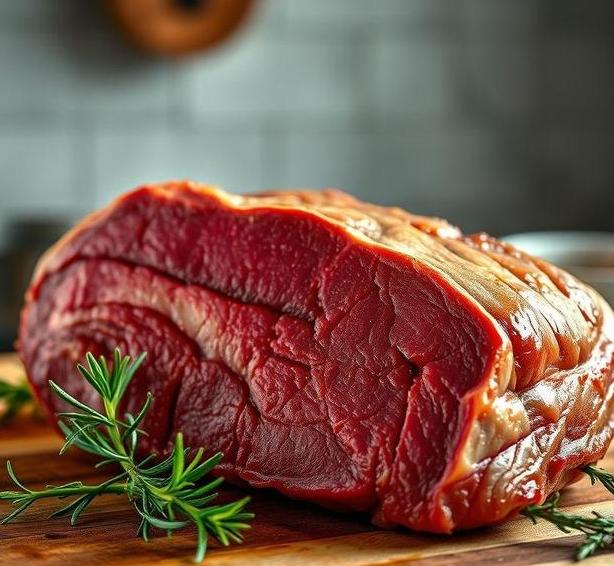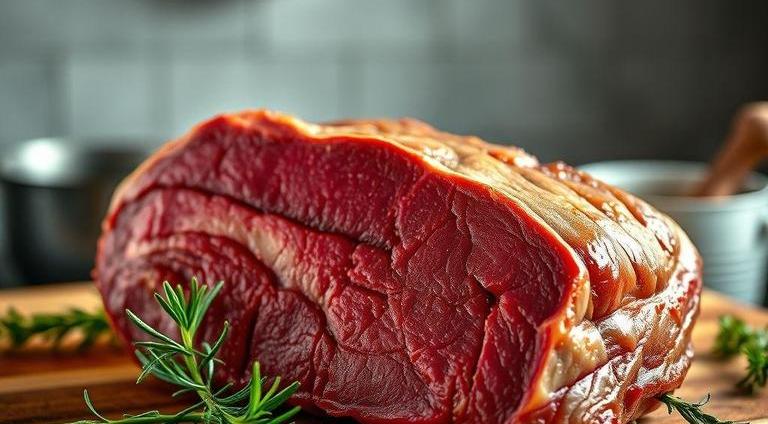Can Elk Meat Go Bad : What You MUST Know
Elk meat, often regarded as one of the healthiest and leanest wild game options available, brings a unique, rich flavor to the dinner table. Known for its high protein content, lower fat levels, and distinct taste, elk meat is increasingly becoming a favorite for those seeking a nutritious and flavorful alternative to traditional beef, pork, or chicken. Whether you’re an avid hunter, a game meat enthusiast, or someone just trying elk for the first time, it’s essential to understand how to preserve and store this precious meat properly.
Elk meat, like any other type of meat, is susceptible to spoilage, but with the right knowledge and care, it can last quite a while in your freezer or fridge. However, there are a few things you need to know to ensure that your elk stays fresh and safe to eat. So, let’s dive into the nitty-gritty of elk meat preservation, from understanding its shelf life to learning how to spot signs of spoilage. By the end, you’ll be an elk meat storage pro!
Can Elk Meat Go Bad?
Absolutely. Just like beef, chicken, or lamb, elk meat is perishable and can spoil if not stored correctly. Even though it’s leaner than other meats and has a lower fat content, which gives it a different texture and taste, elk is still just as vulnerable to bacterial growth, freezer burn, and other forms of spoilage. Elk meat doesn’t last forever, so you need to be aware of its lifespan and proper storage methods.
Here’s why elk meat, like any other type of meat, can go bad:
- Bacterial Growth: Improper storage allows bacteria like Salmonella, E. coli, and Listeria to multiply, leading to potential foodborne illness.
- Enzymatic Activity: Enzymes in the meat can break down proteins and fats, leading to spoilage.
- Oxidation: Exposure to air (specifically oxygen) can cause fats in the meat to go rancid.
- Moisture Loss: Freezer burn can occur if the meat is not wrapped properly, causing dehydration and a loss of flavor.
Shelf Life For Elk Meat

The shelf life of elk meat depends on how you store it and whether it’s fresh, frozen, or cooked. Let’s break it down:
-
Fresh Elk Meat (Refrigerated):
- When stored in the refrigerator (at or below 40°F or 4°C), fresh elk meat lasts about 3 to 5 days.
- If it’s ground elk meat, you’ll want to use it within 1 to 2 days to ensure optimal freshness.
-
Frozen Elk Meat
- Freezing is one of the best ways to extend the shelf life of elk meat. When wrapped properly, elk meat can last in the freezer for up to 12 months without losing its quality.
- The meat will still be safe to eat beyond this, but the quality (flavor, texture) may begin to deteriorate over time, especially if it’s not properly sealed.
-
Cooked Elk Meat
- Once elk meat has been cooked, it can last for 3 to 4 days in the refrigerator. If you want to keep it longer, freezing cooked elk is an option, where it will stay good for about 2 to 3 months.
Quick Tip
If you’re not sure when you’ll be able to eat your elk meat, it’s always a good idea to freeze it right away. That way, you can prevent the possibility of it going bad before you’re ready to cook it.
Common Signs Of Spoilage
Even the most careful storage methods can’t always prevent spoilage. There are a few tell-tale signs to watch out for when checking your elk meat’s freshness:
-
Color Changes
- Fresh elk meat is usually a deep, rich red, but as it spoils, the color can change. Look for a brown or grayish tint as a sign that the meat is no longer good to eat.
- If the meat has green or blueish patches, this is a major red flag of bacterial growth, and you should discard it immediately.
-
Off Smell
- Elk meat should smell clean, slightly gamey, or earthy. However, if the meat has a sour, rancid, or rotten smell, that’s a surefire sign that it has spoiled. Trust your nose-meat doesn’t lie when it comes to bad odors.
-
Slimy Texture
- When elk meat starts to spoil, it will become slimy or sticky to the touch. This sliminess is a result of bacterial growth. Fresh elk meat should feel firm and dry to the touch.
-
Excessive Discoloration In The Fat
- Since elk is a leaner meat, the fat should be white and firm. If the fat becomes yellow or slightly greasy and mushy, it may indicate spoilage or freezer burn if the meat has been stored improperly.
-
Freezer Burn
- If frozen elk meat has developed patches of discoloration (white or grayish spots) and appears dry, that’s likely freezer burn. While freezer-burned meat is safe to eat, the quality will be poor, and the flavor can be compromised.
How To Store Elk Meat?

Proper storage is the key to prolonging the shelf life and ensuring the quality of your elk meat. Here’s a breakdown of how to keep your elk fresh:
Refrigeration
- For Fresh Elk Meat: Keep it in the coldest part of your fridge, ideally in the meat drawer or the bottom shelf.
- Use airtight containers or wrap the meat tightly in plastic wrap or butcher paper, and then place it in a resealable plastic bag to prevent air exposure.
- If you know you won’t be able to use it in 1-2 days, freezing is your best bet.
Freezing Elk Meat
- For Freezing: The key to successful freezing is minimizing exposure to air. Wrap your elk meat tightly in plastic wrap, followed by aluminum foil, or use vacuum-sealed bags for the best results.
- Labeling: Always label the meat with the date you’re freezing it to keep track of its age.
- Avoid overpacking your freezer-air circulation is important for maintaining the temperature.
Cooking And Leftovers
- After cooking, store your leftover elk meat in an airtight container in the fridge. Be sure to consume it within 3-4 days or freeze for later use.
- If freezing cooked elk meat, allow it to cool completely before storing to prevent condensation inside the container.
Expert Tips
-
Use Vacuum Sealing
- If you plan to store elk meat for an extended period, vacuum sealing is the gold standard. It removes excess air, which prevents oxidation and helps preserve the meat’s quality for months.
-
Avoid Refreezing
- If elk meat has thawed in the fridge, it’s safe to cook, but avoid refreezing it unless it’s been properly cooked first. Refreezing meat that has already been thawed can significantly degrade its texture and flavor.
-
Flash-Freezing
- If you have a lot of elk meat to freeze, try flash-freezing individual portions. Lay the meat out on a baking sheet in a single layer and freeze for a few hours before transferring it to bags. This will prevent the pieces from sticking together.
-
Check Your Freezer Temperature
- Your freezer should be at or below 0°F (-18°C). It’s a good idea to keep a thermometer inside your freezer to ensure it’s always at the right temperature.
FAQs
Can Elk Meat Go Bad If It’s Left Out At Room Temperature?
Yes, elk meat can go bad if left at room temperature for an extended period. Like all meat, it should not be left out for more than 2 hours, or 1 hour if the ambient temperature is above 90°F (32°C), as bacteria can grow rapidly in these conditions.
How Can You Tell If Elk Meat Has Gone Bad?
Signs that elk meat has gone bad include a sour or off smell, a slimy texture, discoloration (usually turning gray or brown), and the presence of mold. If the meat feels sticky or tacky to the touch, it should not be consumed.
Can Elk Meat Go Bad In The Freezer?
While freezing elk meat can preserve its quality for long periods, it can still degrade over time if stored improperly. If elk meat is stored in the freezer for too long (more than 12 months), it may suffer from freezer burn, affecting its taste and texture.
How Long Does Elk Meat Last In The Fridge?
Fresh elk meat can last in the fridge for 3 to 5 days if stored properly. It should be kept in an airtight container or wrapped tightly to prevent exposure to air, which can lead to spoilage.
How Long Can You Keep Cooked Elk Meat In The Refrigerator?
Cooked elk meat can be safely stored in the refrigerator for 3 to 4 days. To extend its shelf life, store it in an airtight container and ensure it is cooled to room temperature before refrigerating.
Can Elk Meat Go Bad If It’s Vacuum-sealed?
Vacuum-sealing elk meat can extend its shelf life by limiting exposure to oxygen, which slows down spoilage. Vacuum-sealed raw elk meat can last in the refrigerator for 1 to 2 weeks or up to 12 months in the freezer if stored properly.
What Happens If You Eat Spoiled Elk Meat?
Eating spoiled elk meat can cause food poisoning, which may lead to symptoms such as nausea, vomiting, diarrhea, abdominal pain, and fever. It is always important to check the meat for signs of spoilage before consumption.
Can Elk Jerky Go Bad?
Yes, elk jerky can go bad over time, especially if not stored properly. When stored at room temperature, jerky can last for about 1 to 2 months. For longer storage, it should be kept in the refrigerator or freezer to maintain freshness and prevent spoilage.
Can Elk Meat Spoil After Being Cooked And Then Frozen?
Cooked elk meat can be frozen for long-term storage, typically for 2 to 3 months, without significant quality loss. However, freezing meat after it has been cooked and then thawed repeatedly can lead to a decrease in taste, texture, and overall quality.
How Can I Properly Store Elk Meat To Prevent It From Going Bad?
To prevent elk meat from going bad, store it in an airtight container or tightly wrapped in plastic wrap or butcher paper. Keep it in the refrigerator for short-term storage (3 to 5 days) and freeze it for longer storage (up to 12 months). Make sure your freezer maintains a consistent temperature of 0°F (-18°C) or lower.
